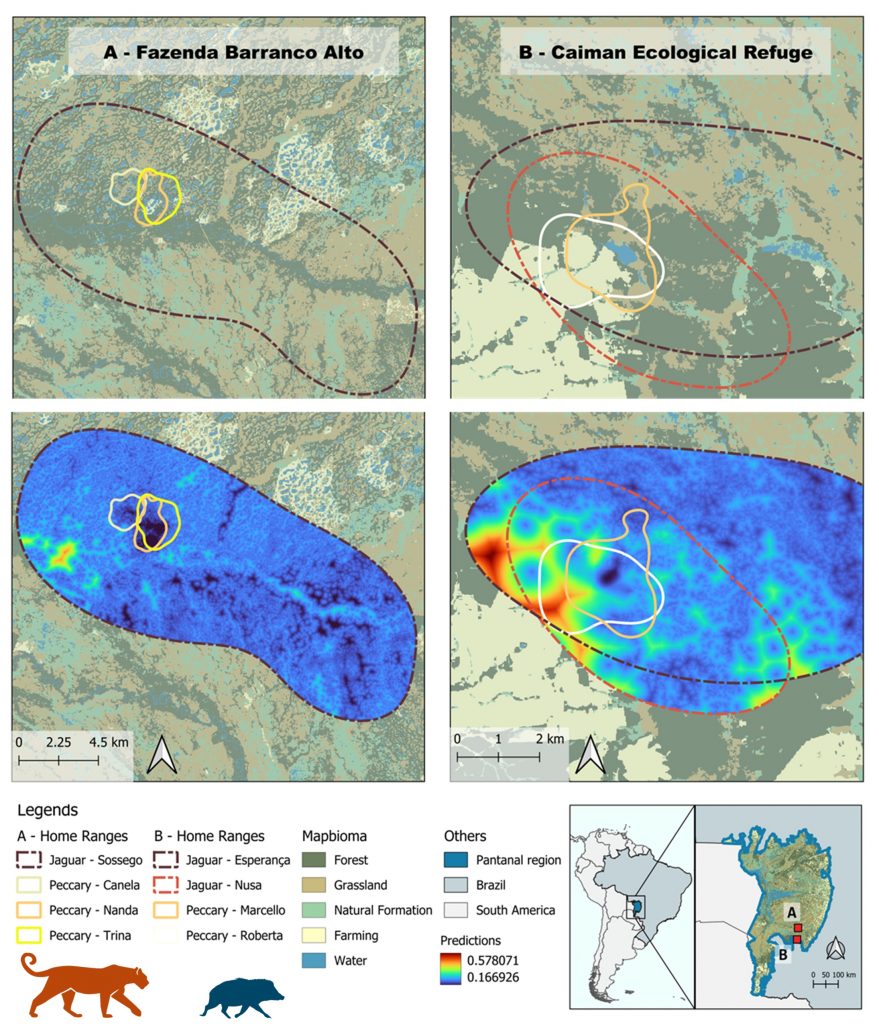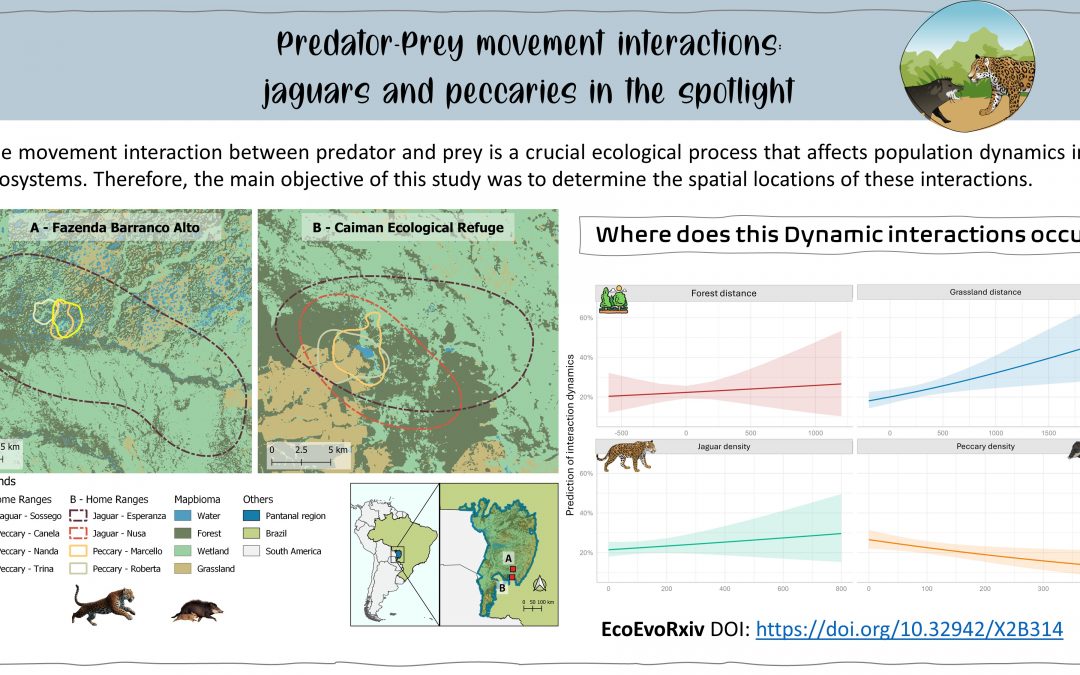Key findings:
- Interaction Dynamics and Distance
Interactions between predators and prey were most frequent at distances of 1 to 3 kilometers, with close encounters (less than 700 meters) being rare.
Interestingly, closer interactions typically occurred during twilight and nighttime, highlighting the importance of diel activity patterns in shaping these dynamics.
- Role of Landscape Structure
We found that the probability of interaction increased with greater distance from grassland areas, suggesting that jaguars prefer the transition zones between forest and grassland for hunting.
Core peccary home ranges showed lower interaction probabilities, possibly because dense herds provide safety in numbers.
- Prey Density and Behavior
Lower peccary densities were associated with higher interaction probabilities, possibly due to reduced herd protection in less populated areas.
While jaguar density was not statistically significant, a trend indicated that higher predator densities might increase interaction likelihood.

Main figure: Study areas where the interactions took place. Top: A. Fazenda Barranco Alto. B.Caiman Ecological Refuge. Bottom: Predictions of jaguar-
peccary interactions within their ranges correspond to the study areas mentioned above. Warmer colors (red) indicate greater interaction probabilities, while cooler colors (blueish) signify areas with lower interaction probabilities.
Conservation Implications
Our study emphasizes the critical role of landscape features in maintaining predator-prey relationships. Protecting forest-grassland transition zones and managing prey populations are essential strategies for conserving the Pantanal’s ecological balance. Understanding these interactions can also help mitigate human-wildlife conflicts in areas where these species overlap with agricultural activities.
Conclusion
This research provides valuable insights into the intricate relationships between jaguars and white-lipped peccaries in the Pantanal. By highlighting how landscape structure and prey density influence these dynamics, we contribute to more informed conservation efforts to preserve this iconic predator-prey duo and their habitat.
To dive deeper into our findings, access the preprint here.
Scientific article available soon

